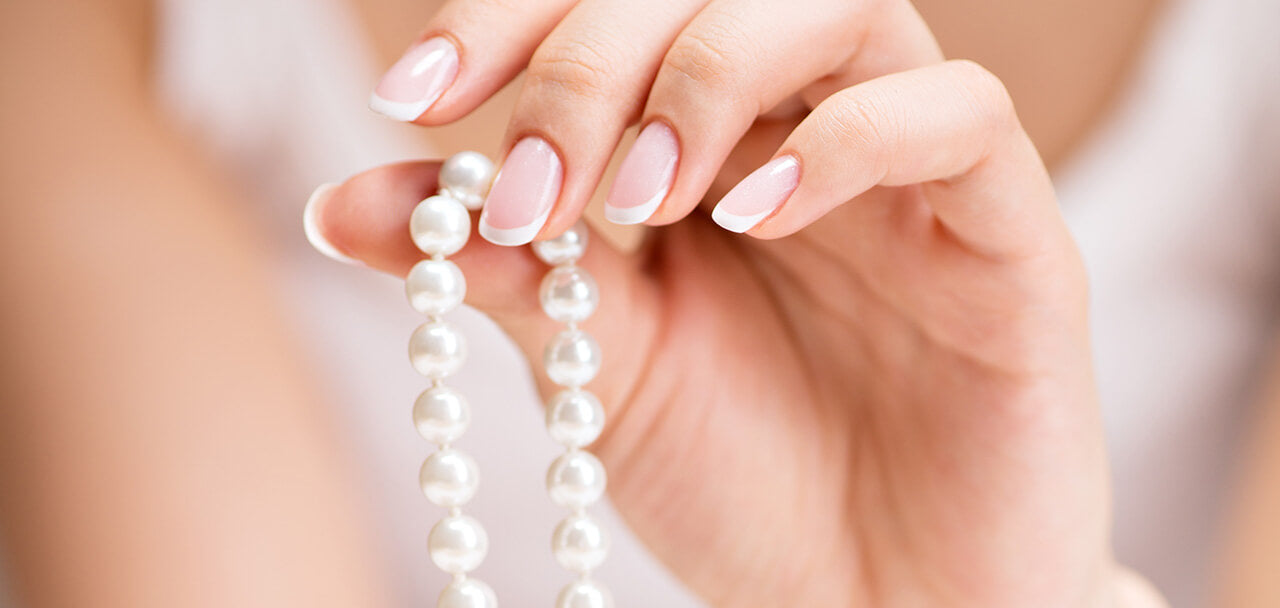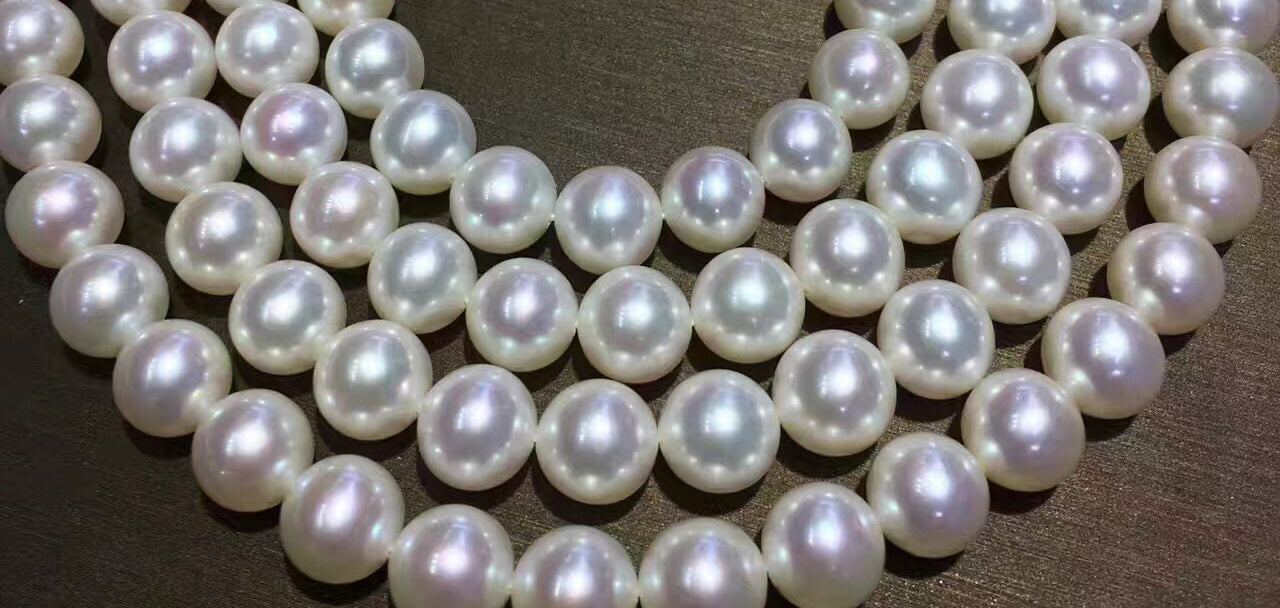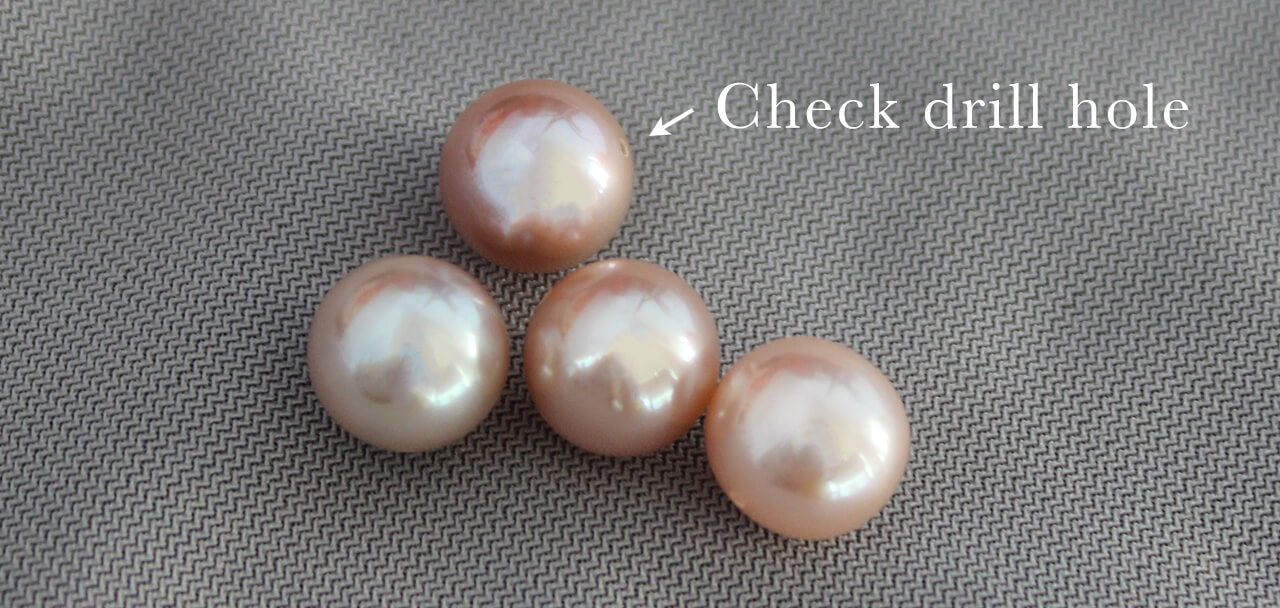How To Tell If Pearls Are Real

Pearls are beautiful and valuable. But since the discovery of these rare gems in ancient times, people have been using machines to produce fake ones. So before we move on to the practical tips you can use anywhere to tell if a pearl is real or not, it’s important to understand the fundamental difference between the two.
What are real pearls?
A real pearl is produced by pearl-bearing oysters either in fresh or salt water. Depending on whether human assistance is involved or not, this organic gem can either be cultured or natural. It’s worth noting that almost all pearls on the market today are cultured. Natural pearls formed without human intervention are extremely rare and are not commercially viable. Therefore, they are usually only found in museums. So the next time you hear someone mention the word “natural pearls” in a store, you know what they really mean is that these are real and not fake.
What are fake pearls?
Fake or imitation pearls are man-made beads. They’re often made from glass, plastic, alabaster or shells that have a pearly coating to give a similar appearance to real pearls. Some fake ones can easily be spotted but some can look very close to the real ones. The most well-known one, Majorica pearl, which is made out of glass, can often fool your eyes.

Now you understand the distinction between the real pearls and the fake ones, let’s go through some of the easy-to-use methods that can help you determine if your pearls are the real deal.
Touch and feel the temperature
The first step you can take is to touch them and feel the temperature. Real pearls are cold to touch for the first couple of seconds before warming up against your skin. Fake plastic pearls have the same temperature as the room temperature and you don’t feel the coolness when you touch them. However, fake ones that are made of glass beads can be cool to touch to start with. But it tends to take them longer to warm up against your skin than real pearls.
Look for tiny irregularities
When you examine real pearls closely or under magnification, you’ll notice tiny irregularities and ridges on each pearl’s surface.

In a strand of cultured pearls, you can always see very tiny differences between them, even when they are top quality and well matched. If the pearls are completely perfect and identical in terms of shape, size, colour and surface characteristics, they are probably fake.
In addition, cultured and natural pearls reflect light differently from the fake ones. The lustre of fake pearls has a glassy look and is unnatural.
Examine the colour
Both natural and cultured pearls often have an overtone, a translucent colour that appears on the outer surface of a pearl. It is especially noticeable among fine quality pearls. You’ll see a hint of pink, green over the main pearl colour.
If you notice the pearls have only one uniform colour and are lack of depth, they are likely to be fake. But it’s worth noting that some real pearls have no overtone either. So this method alone cannot tell the authenticity of a pearl.
Observe the shape

Most real pearls are rarely round. They come in all shapes including oval, button, near-round, circled, coin, drop and totally irregular baroque. In general, round pearls command a higher price than pearls of other shapes. But even with a strand of real pearl necklace that is perfectly round, you can still see some slight differences in their pearl shapes.
So whatever the pearl shape, if you find them completely identical, it’s probably a sign that they’re made by machines.
Rub the pearls to check surface feel
Both natural and cultured pearls have textured surface due to their layered nacre structure. So when you rub the pearls lightly against each other or on your front teeth, they feel a little gritty. Fake or imitation pearls, however, usually feel smooth or glassy.
Feel the weight

Real pearls are normally heavier than the fake ones. Toss them gently up and down in your hand and feel the weight difference. You can use this method to test those made from coated glass or plastic beads.
The only exception with this weight test is in the case of solid glass beads. They weigh much heavier than natural or cultured pearls. So you’ll want to use other methods mentioned here for your judgement.
Check drill holes
The drill holes in real pearls are usually very small whereas those in imitation pearls are often larger. Under magnification, the coating around the drill holes of fake pearls is normally thin and looks like a shiny paint. You can often see flakes or chipped coating around the drill holes that will eventually peel off.

It’s important to remember that all the methods above cannot be used alone to reach a conclusive judgment on whether or not a pearl is real. It’s always useful to combine several of these methods together to detect fake pearls.
You can also perform advanced tests by having them tested in a gemological laboratory for a more conclusive result. As a rule of thumb, you’ll want to buy pearl jewellery from reputable jewellers and pearl specialists. Your retailers should tell you whether the pearls you’re buying are real or fake.
At Pearl-Lang, we DO NOT sell imitation or fake pearls. All of our pearls are either freshwater or saltwater cultured pearls from environmentally sustainable farms around the world, and come with a certificate of authenticity.




